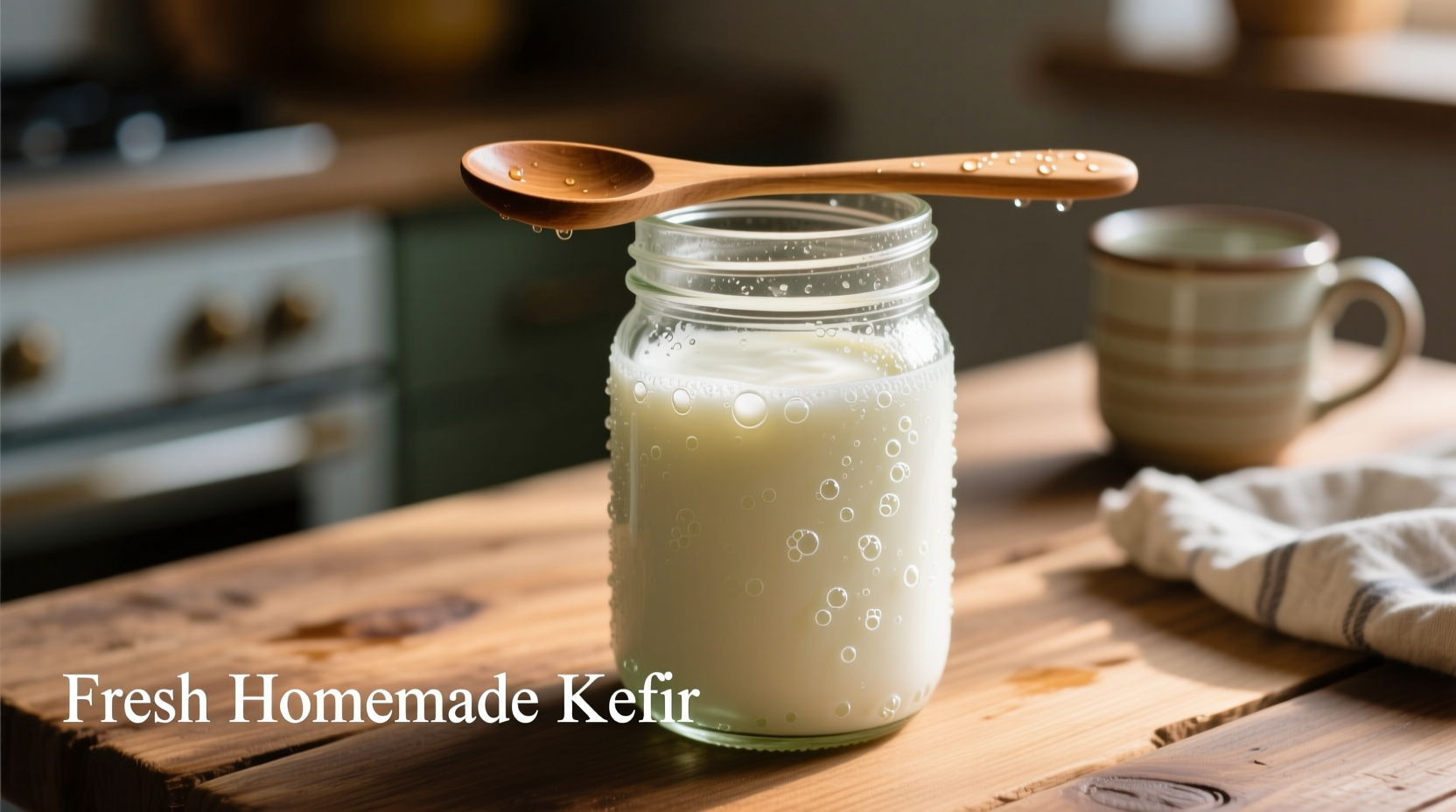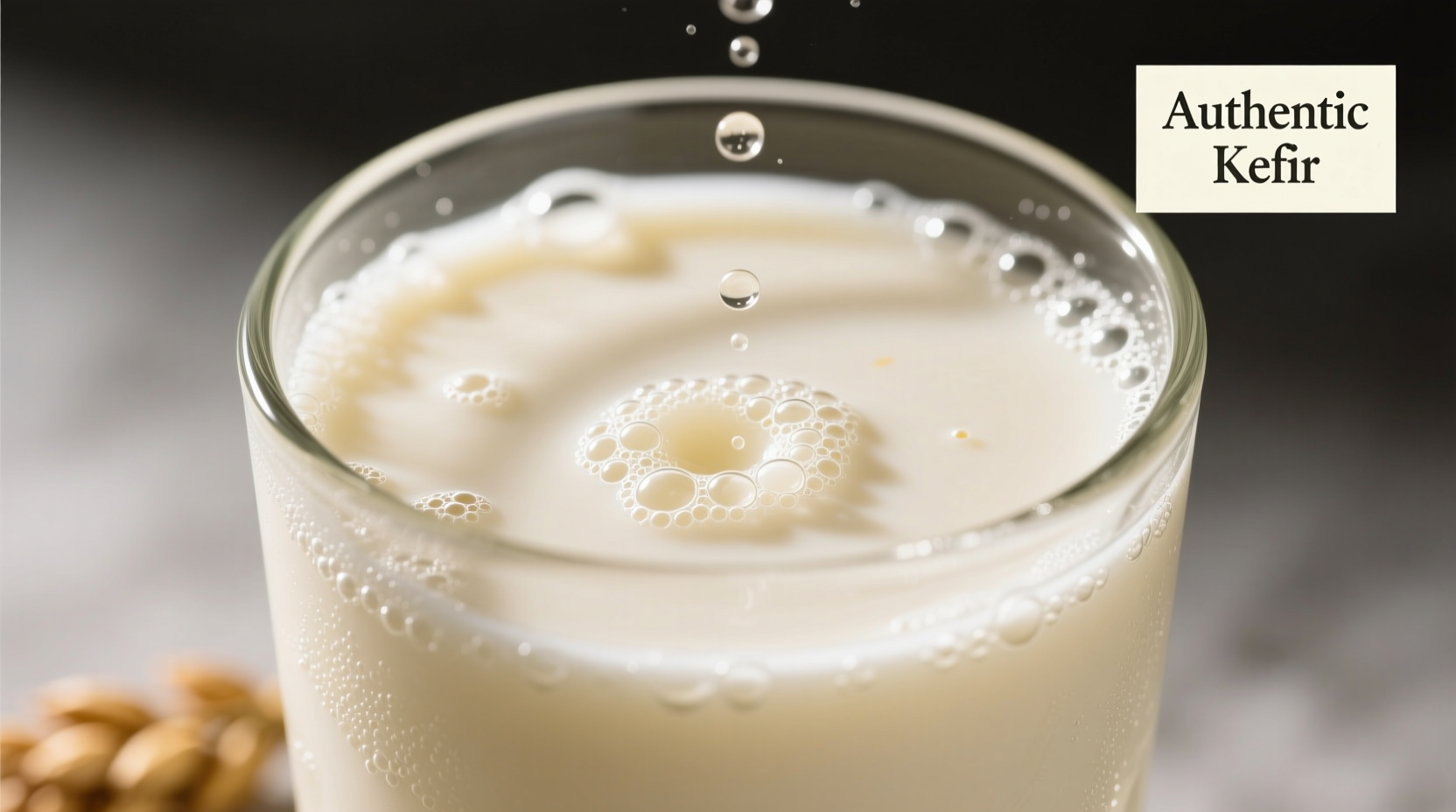Curious about what kefir tastes like before trying it? This probiotic powerhouse delivers a unique sensory experience that surprises many first-time tasters. Unlike plain yogurt, kefir offers a complex flavor profile balancing tanginess with subtle sweetness, carbonation, and earthy undertones that evolve as it ferments. Understanding exactly what to expect can help you appreciate this ancient fermented beverage and determine whether it suits your palate.
Breaking Down Kefir's Flavor Profile
Kefir's distinctive taste emerges from its complex fermentation process involving over 60 strains of beneficial bacteria and yeasts. The primary flavor notes include:
- Tangy sourness - More pronounced than yogurt but less sharp than buttermilk
- Subtle effervescence - Natural carbonation creates a light, refreshing mouthfeel
- Cheesy undertones - Especially noticeable in longer-fermented batches
- Bready notes - From yeast activity during fermentation
- Hint of sweetness - Residual lactose depending on fermentation duration
According to research published in the Journal of Dairy Science, the specific flavor compounds in milk kefir include diacetyl (buttery notes), acetaldehyde (yogurt-like aroma), and various organic acids that create its signature tang. The balance of these compounds shifts significantly based on fermentation time, explaining why kefir taste can vary dramatically between batches.
Kefir vs. Similar Fermented Dairy Products
Understanding what kefir tastes like compared to familiar products helps set accurate expectations. This comparison clarifies common misconceptions about kefir flavor profile:
| Product | Taste Profile | Texture | Acidity Level |
|---|---|---|---|
| Milk Kefir | Tangy, slightly sour, with bread-like notes and subtle carbonation | Thin, pourable consistency | Moderate to high |
| Plain Yogurt | Mildly tangy, consistently creamy | Thick, spoonable | Moderate |
| Buttermilk | Sharp tang, clean finish | Thin, slightly viscous | High |
| Traditional Cultured Sour Cream | Rounded tang, rich mouthfeel | Very thick | Moderate |
This comparison shows why many people describe what does kefir taste like as "yogurt's more interesting cousin"—sharing the tangy profile but with additional complexity from the diverse microbial culture.
How Fermentation Time Affects Kefir Flavor
The duration of fermentation dramatically impacts what kefir tastes like. This timeline reveals how flavor evolves during the culturing process:
- 12-18 hours: Mildly tangy with noticeable sweetness, barely perceptible carbonation
- 24 hours: Balanced tanginess and sourness, distinct effervescence, subtle cheesy notes
- 36-48 hours: Pronounced sourness, stronger carbonation, complex umami notes, separation of whey
- 72+ hours: Very sour, potentially bitter notes, strong alcoholic undertones (0.5-2% ABV)
Research from the National Center for Biotechnology Information confirms that extended fermentation increases lactic and acetic acid production while decreasing residual sugars, directly impacting the perceived sourness and complexity of kefir taste.
Factors That Change Kefir's Taste Profile
Several variables influence what kefir tastes like, explaining why experiences vary:
Milk Type Matters
What does milk kefir taste like compared to water kefir? Significantly different! While milk kefir delivers creamy, dairy-based flavors, water kefir offers a lighter, fruitier profile:
- Whole dairy milk: Richer, creamier taste with milder tang
- Goat milk: Distinctive earthy notes, slightly gamey flavor
- Coconut milk: Tropical undertones with reduced sourness
- Water kefir: Lightly sweet, citrusy notes, more pronounced carbonation
Grain Quality and Health
Healthy kefir grains produce balanced flavors, while stressed grains can create off-tastes. The USDA notes that proper grain maintenance directly impacts the microbial diversity responsible for kefir's complex flavor profile.
When Kefir Tastes "Off": Recognizing Problem Flavors
Understanding what kefir should taste like helps identify potential issues. While authentic kefir has a distinct sour profile, certain flavors indicate problems:
- Excessive bitterness - Often from over-fermentation or contaminated grains
- Sharp acetone smell - Indicates yeast dominance requiring grain refreshment
- Rancid or soapy notes - Sign of fat breakdown in dairy kefir
- Mold presence - Any visible mold means discard the entire batch
The FDA's guidance on fermented foods emphasizes that properly cultured kefir should never have unpleasant bitterness or rancidity—these indicate contamination or improper fermentation conditions.
Tips for First-Time Kefir Tasters
If you're wondering what does kefir taste like and whether you'll enjoy it, these tips help navigate your first experience:
- Start with store-bought varieties labeled "mild" or "original" before attempting homemade
- Chill thoroughly before tasting—cold temperature reduces perceived sourness
- Try plain first, then experiment with natural flavor additions like honey or fruit
- Give it multiple tries—palates often adjust to fermented flavors over time
- Consider adding to smoothies if the standalone taste proves challenging
Many first-time tasters describe the initial experience of what kefir tastes like as "surprisingly refreshing" once they adjust to the tanginess. Food scientists note that repeated exposure to fermented flavors typically increases appreciation within 3-5 tastings as your palate adapts.

Making Kefir More Palatable: Flavor Enhancement Techniques
What does kefir taste like with simple enhancements? These professional chef-approved methods improve flavor without compromising benefits:
- Post-fermentation sweetening - Add honey, maple syrup, or fruit after culturing to avoid feeding unwanted bacteria
- Flavor infusion - Stir in vanilla extract, cinnamon, or citrus zest
- Blending - Create smoothies with banana, berries, or mango to balance tartness
- Temperature play - Serve frozen as "kefir pops" for milder flavor perception
- Layering - Create parfaits with granola and fruit to complement the tang
Professional chefs recommend starting with a 1:1 ratio of kefir to sweet fruit when first exploring what does kefir taste like with flavor additions, gradually reducing sweetness as your palate adapts to the natural tang.
Developing an Appreciation for Kefir's Complex Flavor
Understanding what kefir tastes like involves recognizing how your perception evolves. Many cultures that traditionally consume kefir describe developing a "taste memory" where the complex sourness becomes desirable. This sensory adaptation occurs because:
- Repeated exposure increases tolerance for sour flavors
- Brain associates the taste with positive digestive benefits
- Palate learns to detect subtle flavor nuances beyond initial tartness
- Appreciation grows for the beverage's refreshing quality
Anthropological studies of traditional kefir-consuming communities show that regular consumption typically leads to preference development within 2-3 weeks, transforming what initially seems too sour into a desired refreshing quality.
Frequently Asked Questions About Kefir Taste
Does kefir taste sour like yogurt?
Kefir has a more complex sour profile than yogurt. While both are tangy, kefir offers additional notes of effervescence, breadiness, and subtle cheesiness from its diverse microbial culture. The sourness is typically more pronounced than regular yogurt but less sharp than buttermilk.
Why does my kefir taste bitter?
Bitterness in kefir usually indicates over-fermentation (beyond 48 hours), stressed kefir grains, or contamination. Properly fermented kefir should have balanced sourness without bitterness. Try reducing fermentation time, refreshing grains with fresh milk, or ensuring proper temperature (68-85°F) for optimal flavor development.
How does water kefir taste compared to milk kefir?
Water kefir has a lighter, fruitier profile with citrus notes and noticeable carbonation, while milk kefir offers creamy, tangy flavors with bread-like undertones. Water kefir typically tastes milder and sweeter than milk kefir, which has a more pronounced sourness and complex dairy-based flavor profile.
Does kefir taste better when homemade versus store-bought?
Taste preference varies significantly. Homemade kefir often has more complex, robust flavors that change with each batch, while store-bought versions maintain consistent mild profiles. Many find homemade kefir more tangy and effervescent, while commercial versions are typically smoother and milder due to controlled fermentation and added sweeteners.
Can I make kefir taste less sour?
Yes, you can reduce sourness by shortening fermentation time (12-18 hours), using whole milk instead of skim, maintaining cooler temperatures (68-72°F), or adding natural sweeteners after fermentation. For immediate consumption, blending with sweet fruits like bananas or mangoes effectively balances the tartness while preserving probiotic benefits.











 浙公网安备
33010002000092号
浙公网安备
33010002000092号 浙B2-20120091-4
浙B2-20120091-4